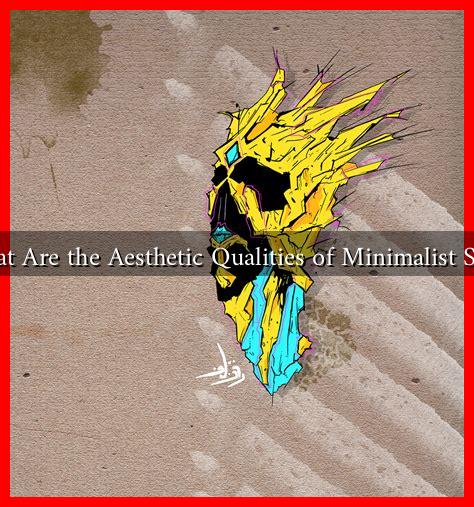-
Table of Contents
- What Are the Aesthetic Qualities of Minimalist Style
- The Core Principles of Minimalist Aesthetics
- Visual Elements of Minimalist Design
- Case Studies: Minimalism in Action
- Architecture: The Barcelona Pavilion
- Interior Design: The Muji Store Concept
- Fashion: The Capsule Wardrobe
- The Psychological Impact of Minimalism
- Conclusion: Embracing Minimalism
What Are the Aesthetic Qualities of Minimalist Style
Minimalism is more than just a design trend; it is a lifestyle choice that emphasizes simplicity, functionality, and the beauty of restraint. Originating in the mid-20th century, minimalist style has permeated various fields, including architecture, interior design, fashion, and art. This article explores the aesthetic qualities of minimalist style, highlighting its core principles and providing examples that illustrate its impact.
The Core Principles of Minimalist Aesthetics
At its essence, minimalist style is characterized by a few key principles that define its aesthetic qualities:
- Simplicity: Minimalism strips away the unnecessary, focusing on the essential elements of design. This simplicity creates a sense of calm and clarity.
- Functionality: Every element in a minimalist design serves a purpose. This functional approach ensures that beauty is not just skin deep but is also practical.
- Neutral Color Palettes: Minimalist designs often utilize a limited color palette, favoring whites, blacks, grays, and earth tones. This choice enhances the feeling of spaciousness and tranquility.
- Open Spaces: Minimalism embraces open floor plans and uncluttered spaces, allowing for natural light to flow and creating a sense of freedom.
- Quality over Quantity: Minimalist style prioritizes high-quality materials and craftsmanship over an abundance of items, leading to a more refined aesthetic.
Visual Elements of Minimalist Design
Minimalist design employs various visual elements that contribute to its overall aesthetic appeal:
- Geometric Shapes: Clean lines and geometric forms are prevalent in minimalist architecture and design. These shapes create a sense of order and harmony.
- Negative Space: The use of negative space is crucial in minimalist design. It allows the eye to rest and emphasizes the importance of each element within the space.
- Textural Contrast: While colors may be muted, textures can add depth and interest. Combining materials like wood, metal, and glass can create a tactile experience.
Case Studies: Minimalism in Action
To better understand the aesthetic qualities of minimalist style, let’s examine a few notable examples:
Architecture: The Barcelona Pavilion
Designed by Mies van der Rohe for the 1929 International Exposition, the Barcelona Pavilion is a quintessential example of minimalist architecture. Its open layout, use of simple geometric forms, and a limited color palette create a serene environment that emphasizes the beauty of space itself. The pavilion’s iconic use of materials, such as onyx and marble, showcases how minimalism can achieve elegance through simplicity.
Interior Design: The Muji Store Concept
Muji, a Japanese retail company, embodies minimalist design in its product offerings and store layouts. The stores feature clean lines, neutral colors, and an uncluttered presentation of products. This approach not only enhances the shopping experience but also reflects the brand’s philosophy of simplicity and functionality.
Fashion: The Capsule Wardrobe
The concept of a capsule wardrobe is rooted in minimalist principles. By curating a small selection of versatile clothing items, individuals can simplify their daily choices while maintaining a stylish appearance. This approach not only reduces clutter but also promotes sustainability by encouraging mindful consumption.
The Psychological Impact of Minimalism
Beyond its visual appeal, minimalist design has psychological benefits. Research indicates that environments characterized by minimalism can reduce stress and anxiety. A study published in the journal Environment and Behavior found that individuals in minimalist spaces reported higher levels of focus and lower levels of distraction.
Conclusion: Embracing Minimalism
In conclusion, the aesthetic qualities of minimalist style are defined by simplicity, functionality, and a focus on essential elements. Through its use of neutral color palettes, open spaces, and high-quality materials, minimalism creates environments that are not only visually appealing but also psychologically beneficial. As we navigate a world filled with excess, embracing minimalist principles can lead to a more intentional and fulfilling lifestyle. Whether in architecture, interior design, or fashion, the beauty of minimalism lies in its ability to highlight what truly matters.




